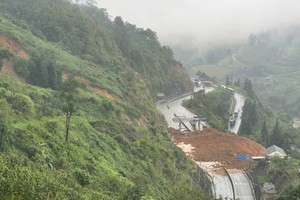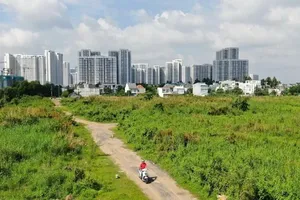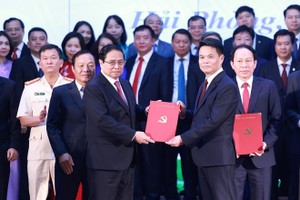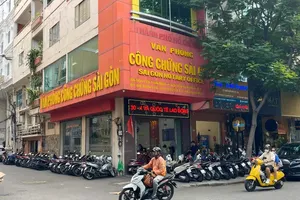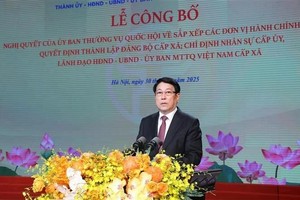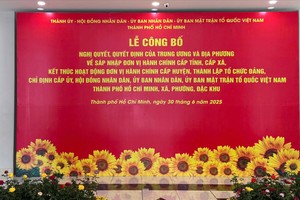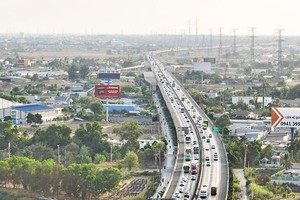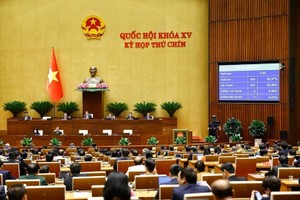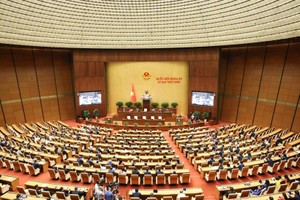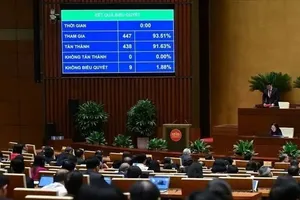Increasing amount of dangerous waste due to fast industrialization has put a big pressure on environment protection efforts, officials said at a conference Monday.
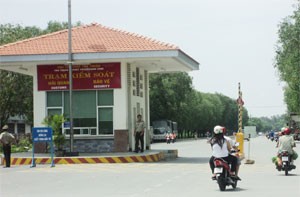
Statistics from the Department of Environment Criminals from the Ministry of Public Security showed that the country last year discharged around 32 million tons of solid waste, including around 200,000 medical waste, 11 million tons from agricultural areas, 13 million tons from urban residential areas and six million tons of industrial waste.
Many of them are ranked as dangerous waste, said the department head Nguyen Xuan Ly.
Ly said that only around 60 percent of dangerous waste has been treated according to environmental requirements. The rest has been either buried, discharged everywhere or recycled illegally.
His deputy revealed at the conference that the authorities last year punished 322 violations concerning dangerous waste, for a total of nearly VND10 billion (US$485,790).
Among the violators were Song Xanh Company in the southern beach town Vung Tau which had illegally buried more than 4,600 cubic meters of dangerous waste, Binh Chanh Construction Invested JSC in Ho Chi Minh City which illegally discharged 836 tons of waste mud, and Phu Gia Company in the northern province of Hoa Binh which illegally recycled 59,000 liters of waste oil.
Officials at the conference said that the country is discharging too much dangerous waste for poorly-supervised treatment facilities and confusing regulations to handle.
Nguyen Van Phuoc, deputy director of HCMC Department of Natural Resources and Environment, said that the city has the largest number of industrial facilities in Vietnam, which is between 10,000 and 20,000.
Annual surveys showed that the city discharged around 350 to 500 tons of dangerous waste from industrial operation every year, and 9 to 12 tons of dangerous medical waste.
The amount of dangerous waste around HCMC is estimated to increase 10 to 12 percent every year and reach around 400,000 tons in 2015, Phuoc said.
He said the city is still giving permits to treatment plants operating outside industrial zones, which makes them hard to control.
Also, the city is yet to build a modern garbage dump that is large enough for safe burial of dangerous waste.
Tran Van Khuong, an official from the Ministry of Natural Resources and Environment, said at the conference that regulations on environment pollution punishment are unclear.
The regulations require individuals and organizations to report their discharge of dangerous waste to the authorized agencies but do not specify the amount of waste that needs the reporting, Khuong said.
He said the government’s rules also failed to set specific technical requirements on vehicles for transporting dangerous waste.
Hoang Van Vy, a senior inspector from the Ministry of Natural Resources and Environment, said that environment officials at some places have even been corrupted and allowed unqualified groups and people to perform the waste treatment job.
In order to fix the situation, Vy suggested that concerned agencies to perfect regulations, simplify administrative procedures involved, enhance inspections and raise the penalties.
The entryway of the industrial zone Tan Thuan in HCMC’s District 7. Industrial waste is a kind of dangerous waste that has puzzled environmental authorities.
